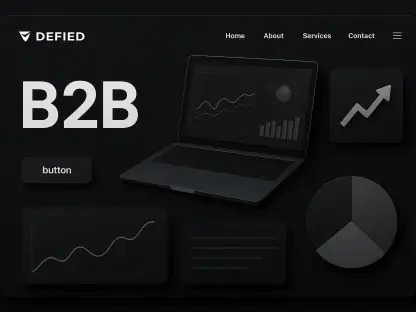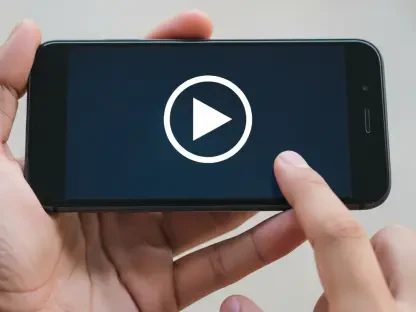This guide aims to equip mobile gaming developers and marketers with actionable strategies to harness mobile OEM advertising as a powerful tool for user acquisition and sustainable growth. By following the detailed steps and insights provided, readers will learn how to navigate the challenges of rising costs and market saturation, optimize campaigns with precision targeting, ensure privacy compliance, and drive long-term retention in a competitive landscape.
Why Mobile OEM Advertising Matters for Gaming Success
Imagine a scenario where a mobile game, despite its innovative design and engaging mechanics, struggles to break through the noise of a crowded market. With 49.3 billion downloads and $81.7 billion in in-app purchase revenue recorded in the industry as of the latest data, the sheer scale of opportunity is matched by intense competition. Traditional platforms have become increasingly expensive and less effective, leaving many developers searching for alternative pathways to reach their audience.
The purpose of this guide is to illuminate mobile OEM advertising as a transformative solution for user acquisition challenges. Offered by major device manufacturers like Xiaomi, Samsung, and Huawei, this approach taps into billions of Android users through device-level integrations, presenting unique opportunities to engage potential players at critical moments.
Understanding the importance of diversifying advertising strategies cannot be overstated in today’s environment. With costs-per-install averaging $1.93 globally, finding cost-effective and impactful channels is paramount. This guide provides a roadmap to adopting OEM advertising, ensuring developers can maximize return on investment while aligning with evolving privacy standards and user expectations.
Step-by-Step Guide to Mastering Mobile OEM Advertising
Step 1: Understand the Shift to OEM Advertising and Its Unique Value
Begin by recognizing the limitations of traditional advertising platforms, where high costs and saturation hinder growth. The competitive landscape has driven a need for alternative channels that offer better reach and efficiency. OEM advertising stands out by providing direct access to users through the devices they use daily, creating touchpoints that traditional methods cannot replicate.
Focus on the distinct advantages offered by partnerships with device manufacturers. These platforms enable interactions during device setup, app discovery, and system notifications, ensuring ads are seen at moments of high user attention. Researching the ecosystems of major OEM brands can reveal how their user base aligns with target demographics for specific game genres.
Take note of industry trends indicating a broader shift toward diversified user acquisition strategies. As privacy regulations tighten and attribution models evolve, OEM channels provide a resilient framework to maintain campaign effectiveness. This foundational understanding sets the stage for deeper exploration into specific tactics.
Step 2: Implement Device-Level Targeting for Maximum Impact
Start targeting users at critical moments by leveraging device-level integrations unique to OEM platforms. Ads displayed during initial device activation or through system-level app recommendations capture attention when users are most receptive. Develop campaigns that align with these touchpoints to boost conversion rates significantly.
Enhance engagement by utilizing native notifications that blend seamlessly into the user experience. Unlike intrusive pop-ups, these notifications appear as part of the device’s interface, reducing friction and increasing visibility. Tailor messaging to reflect contextual relevance, ensuring it resonates with users based on their immediate activities or needs.
Monitor the impact of these strategies on user behavior through detailed analytics provided by OEM platforms. Adjust targeting parameters based on data insights to refine reach and improve outcomes over time. Consistent evaluation helps in identifying the most effective moments for ad delivery, optimizing overall campaign performance.
Step 3: Prioritize Privacy-Compliant Attribution for Reliable Results
Address the challenges posed by modern privacy frameworks by adopting OEM advertising’s direct attribution systems. With initiatives reshaping how data is collected and used, relying on aggregated, device-level insights ensures compliance while maintaining accuracy in tracking return on investment.
Compare the limitations of traditional probabilistic models with the precision of OEM data. The latter offers a clearer picture of campaign performance without infringing on user privacy, enabling better decision-making. Use these insights to allocate budgets effectively across different channels and ad formats.
Stay updated on evolving privacy standards to ensure all campaigns remain compliant. Partnering with OEM providers that prioritize transparent data practices can safeguard against potential disruptions. This step is crucial for building trust with users while sustaining measurable growth in user acquisition efforts.
Step 4: Optimize Creative Formats to Drive Engagement Across Markets
Experiment with innovative ad formats such as playable ads, short-form videos, and user-generated content to capture interest. These formats have proven effective in various regions, with playable ads excelling in mature markets and user-generated content building trust in casual gaming genres. Select formats that align with the game’s style and audience preferences.
Combat creative fatigue by refreshing ad content regularly, a practice adopted by a significant portion of advertisers in emerging markets. Updating visuals and messaging keeps campaigns relevant and prevents audience disengagement. Test multiple variations to identify which creatives resonate most with specific demographics.
Analyze regional differences to tailor creative strategies accordingly. What works in one market may not translate to another due to cultural or behavioral variances. Continuous testing and adaptation ensure that ad content remains impactful, driving higher click-through rates and user retention over extended periods.
Step 5: Balance Monetization with User Experience for Sustainable Growth
Integrate rewarded videos and native ad placements through OEM channels to monetize without disrupting gameplay. These formats maintain a positive user journey by offering value in exchange for engagement, a model widely adopted in key markets like North America. Design ads that feel like a natural part of the gaming experience.
Explore hybrid monetization models that combine advertising with in-app purchases for diversified revenue streams. This approach balances income generation with user satisfaction, ensuring neither aspect overshadows the other. Track user feedback to gauge the effectiveness of these integrations and adjust as needed.
Implement seamless ad formats like Dynamic Preloads that enhance rather than interrupt gameplay. Such integrations can preload content or recommendations directly onto devices, fostering organic discovery. Prioritizing user experience in monetization strategies helps in building loyalty and sustaining long-term growth.
Step 6: Focus on Early Engagement and Retention Strategies
Capitalize on early engagement opportunities by using OEM platforms for curated app recommendations and preloads. Reaching users before they even install a game increases the likelihood of sustained interest. Develop campaigns that highlight unique game features during these initial interactions to create a strong first impression.
Leverage device-level analytics to understand user behavior from the outset and tailor retention efforts accordingly. Insights into how users interact with ads or recommendations can inform personalized follow-up strategies. Use this data to refine messaging and incentives that encourage continued play.
Build long-term retention by fostering organic discovery through OEM ecosystems. Encourage users to explore related content or features via system-level prompts that feel intuitive. Combining early engagement with ongoing retention tactics ensures a higher lifetime value for each acquired user.
Final Thoughts on Building a Future with OEM Advertising
Reflecting on the journey through the outlined steps, it becomes evident that mobile OEM advertising offers a robust pathway to overcome traditional user acquisition hurdles. Each phase, from understanding the value of device-level access to optimizing creatives and balancing monetization, contributes to a comprehensive strategy that reshapes campaign outcomes.
Looking ahead, developers and marketers are encouraged to deepen their partnerships with OEM providers to unlock even more advanced integrations and emerging technologies. Exploring additional resources, such as industry playbooks focused on OEM strategies, provides further guidance to refine approaches and stay competitive.
The lasting impact of adopting these methods lies in their ability to adapt to an ever-changing digital landscape. By continuously innovating and prioritizing user-centric advertising, the groundwork is laid for not just immediate success, but enduring growth in the dynamic world of mobile gaming.









